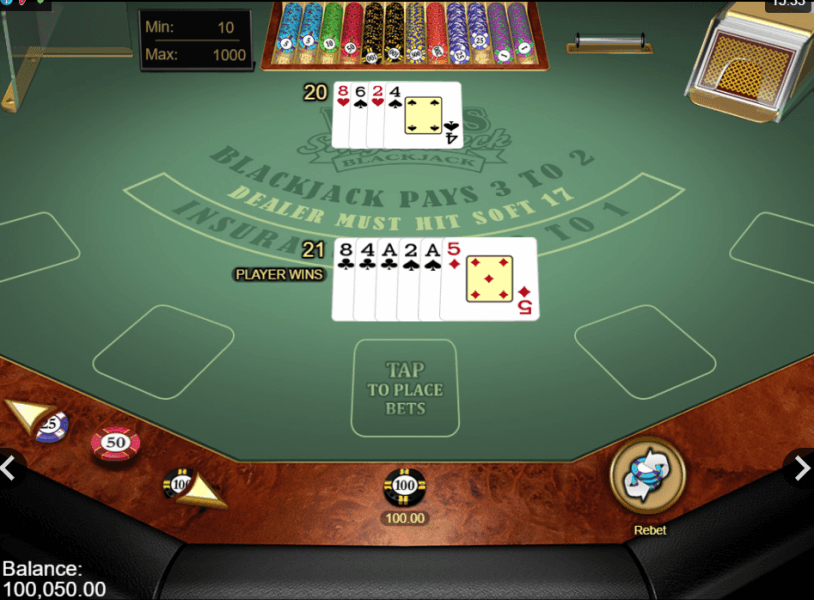Probability Blackjack Math
The bust probability is calculated by dividing the number of Dealer's busted hands to the total possible blackjack actions. Blackjack actionsis a parameter that counts everything: Busted hands, pat hands (17 to 21), blackjack hands, and draws or hits to the first 2-card hands (incomplete hands). The software does NOT print the incomplete bj hands.
- This guide, written by casino math professor Robert Hannum, contains a brief, non-technical discussion of the basic mathematics governing casino games and shows how casinos make money from these games.The article addresses a variety of topics, including house advantage, confusion about win rates, game volatility, player value and comp policies, casino pricing mistakes, and regulatory issues.
- One of the most interesting aspects of blackjack is the probability math involved. It’s more complicated than other games. In fact, it’s easier for computer programs to calculate blackjack probability by running billions of simulated hands than it is to calculate the massive number of possible outcomes.
Probability of Blackjack
Content Page
Page
Statement of task 2
Introduction 3 - 4
Data collection 5 - 6
The four Blackjack strategies 7 - 15
Conclusion 16
Bibliography 17
Statement of Task
This project aims to investigate how mathematics works in one of the most popular card games in the world - Blackjack. It examines the probability in the Blackjack and how the use of mathematics can be…show more content…
Blackjack strategies
Strategy I Hit when the sum of the first two cards is less than the dealer’s upcard
Let x be the player’s sum of card values of the first two cards.
Let D be the dealer’s upcard(the second card).
If x < D, the player should always hit.
When x < D, it is obvious that x must be less than the dealer’s final value (covered card + upcard), given that the sum of the first two cards of the dealer is[pic]- no busting. Therefore, under this situation, the player must hit. Otherwise, his probability of winning is 0.
Strategy II Hit or Stand
If the hard total is 11 or less, the player should always hit. This is because no matter what card the player is getting, the total hand value will not exceed 21. By using the Hit ot Stand strategy, the house edge can be cut to as low as 2%.[1] Fig. 1 is the decision making chart when using this strategy.
Card A 2 3 4 5 6 7 8 9 10 J Q K Real value 1 11 2 3 4 5 6 7 8 9 10 10 10 10 A 1 2 12 3 4 5 6 7 8 9 10 11 11 11 11 11 12 22 13 14 15 16 17 18 19 20 21 21 21 21 2 2 3 13 4 5 6 7 8 9 10 11 12 12 12 12 3 3 4 14 5 6 7 8 9 10 11 12 13 13 13 13 4 4 5 15 6 7 8 9 10 11 12 13 14 14 14 14 5 5 6 16 7 8 9 10 11 12 13 14
Simply speaking, probability relates to ascertaining what the chances are (in other words, what the odds are) of some event happening, such as winning a jackpot or drawing a certain card or hand. It is the figure obtained when you divide the number of ways an event can occur by the total possible number of outcomes in a given scenario. For example, if we wanted to establish the probability of drawing a red card from a deck of cards, we would divide 26 (total number of ways to draw a red card, since there are 26 red cards in a deck) by 52 (total number of cards in the deck, disregarding jokers), giving us ½ i.e. a probability of 0.5.
The logic behind probability theory has of course been around forever, though the actual mathematical study of it is a relatively new development. The extensive inherent probability scenarios that exist in the ancient pastime of gambling in particular were a major factor in prompting the study of probability in mathematical terms – people wanted to know in more precise detail what their chances of winning were!
The mathematics of probability
Probability Blackjack Math Practice
The mathematics that describe the laws of probability involve events – represented by algebraic variables, usually “A” – and decimal numbers between 0 and 1. So, the probability (P) of event A (say, drawing a King from a deck of cards) happening is represented as “P(A) or p(A) or Pr(A). An event that has no chance of occurring (drawing five aces from a deck of cards) has a probability of zero, while an event that is certain to occur (drawing a card that is either red or black from a deck of cards without jokers) has a probability of 1.
To calculate the probability of two events occurring at the same time is simply a matter of multiplying together the probability of each of these events. For example, if we spun two dice at the same time, the probability of rolling a 4 on the one dice is one in six (P = 0.1667), while the probability of rolling a 2 on the other is also 0.1667, but the probability of rolling a 2 AND a 4 is 0.1667 x 0.1667 = 0.027. Various formulas for probability exist, and of particular importance in determining which formula to use is to ascertain whether events are independent or dependent.

Probability Blackjack Math Rules
Have a read through our other pages on the mathematics of gambling to learn about more applications of mathematics in gambling, or view our gambling mathematics glossary for a quick overview of the most important concepts in addition to probability theory.



